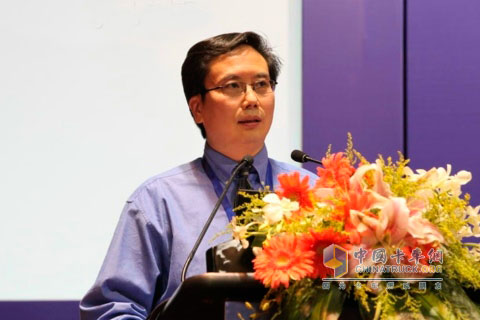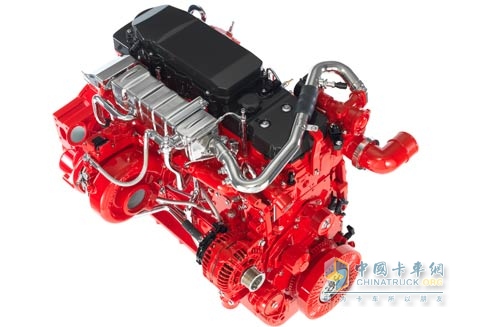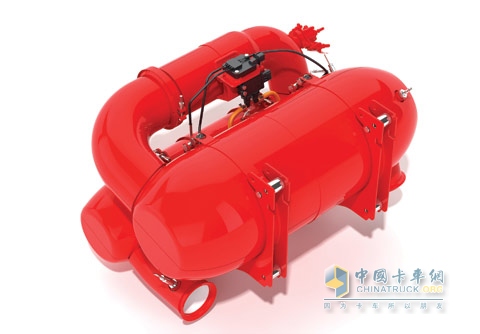Recently, almost 60% of the country's regions have experienced a hazy yellow warning. The governance of atmospheric pollution once again mentioned the "emergency, urgent" height. As one of the "crimes" of smog formation, the problem of motor vehicle emissions has always been criticized by people. Although there is still no clear data showing the proportion of motor vehicle emissions in the formation of PM2.5, its role can not be ignored. Countries all over the world attach great importance to the emission control of motor vehicle emissions, and continuously improve vehicle emissions. Regulatory requirements are a necessary means of urban atmospheric governance. To combat haze, we must work together from all angles. For the automobile manufacturing and use industries, accelerating the completion of motor vehicle emissions from the “National 3rd†to “4th National†environmental protection upgrade is currently a key issue.
On February 24, 2014, a reporter from China Truck Network interviewed Dr. Peng Lixin, Vice President of Cummins and Chief Technology Officer of China, to discuss the hazards of automobile exhaust gas to the environment, related issues such as "National III" and "National IV". Cummins is the world's leading power equipment manufacturer. It was the first American diesel engine company to produce engines locally in China. As early as 20 years ago, the US government had already passed EPA emission regulations to control motor vehicle emissions to improve urban air quality. And Cummins has therefore had nearly 20 years of emission control technology research and application practice. Dr. Peng Lixin combines haze formation mechanism and long-term diesel engine technology research experience to explain haze and emission control.

Peng Lixin, Chief Technology Officer and Vice President of Cummins China
Pay attention to the impact of exhaust emissions from commercial vehicles on smog
"Although there is no clear data, the impact of vehicle exhaust emissions on environmental pollution is obvious." Dr. Peng Lixin said, "The most obvious is that the haze has a local character, which is why we study the formation of haze. It provides great convenience. For example, the haze in the Hebei area of ​​Beijing is certainly inseparable from its large number of car ownership."

Cummins emission aftertreatment schematic
Among all sources of exhaust emissions from commercial vehicles, emissions from commercial truck and passenger car exhaust emissions are more prominent, especially heavy trucks. According to statistics, the number of heavy trucks in Beijing only accounts for 5%, but its tail gas emissions account for 50%. According to the 24-hour linear tracking of the PM value in Beijing, the time from 12:00 PM to 4:00 PM is the highest PM value in the whole day. This time is the time allowed for the truck to enter the city.
How does the emission of automobile exhaust form haze? Through the introduction of Dr. Peng Lixin, we learned that the impact of diesel engine on smog is mainly reflected in its sulphur content. The process of combustion in the sulphur diesel engine generates power, and it directly generates sulphur dioxide and converts it into sulphuric acid during the discharge process. Salt is discharged into the air in the form of pellets and forms PM2.5 directly. After the sulfate is discharged into the air, it continues to combine moisture, dust, etc. in the air and reacts to form a second pollution, similar to photochemical smog. Form haze weather. Therefore, for diesel engines, reducing fuel sulfur content, improving the adequacy of combustion, refueling after-treatment technologies and other means to reduce nitrogen oxides and particulate matter emissions, thereby improving emission levels, and gradually controlling the emission levels of pollutants emitted by automobiles in a phased manner, It is the basic consensus of environmental governance in all countries. This regulation is strictly enforced in some developed countries such as the European Union, the United States, Japan, and other countries, but is also actively pushed in developing countries such as China, India, and Brazil.
At present, the emission control of passenger vehicles is more stringent, and the emission of urban passenger vehicles basically meets or exceeds the control requirements of the current emission regulations. However, for commercial vehicles, the formulation and strict implementation of emission regulations is a consequential one. Things. As early as 2012, the state promulgated the requirements for the fourth national emission regulations, but it has been difficult to implement them strictly. On the one hand, the consistent reduction in sulphur content across the country is not an easy task. Second, the enforcement of emission regulations is very difficult, and the third, emissions The implementation of laws and regulations will inevitably lead to an increase in the cost of acquisition by users. This is naturally a significant expenditure for the profitable business transportation industry, which has a meagre profit.
In the face of these challenges, some problems cannot be solved for the moment. We must focus on the main theme of environmental protection, work hard towards a solution to the problem, and make breakthroughs one by one, step by step.
The quality of fuel oil has been criticized. Can the National Diesel Engine eat "coarse grains"?
Regarding fuel quality, the National IV oil upgrading country’s fourth oil is mainly a reduction in sulfur content. Sulfur has a great impact on automobile emissions. According to relevant regulations, the national IV oil has a sulfur content of 50PPM, and the country’s third sulfur content is 350PPM. Volume is a key indicator of oil quality. In 2013, the State Council clearly defined a roadmap for upgrading oil products. By the end of 2014, all gasoline and diesel companies will complete the transition to the “National IV†standard, and by the end of 2017, the “National Five†will be completed. The standard transition. In this context, many provinces and cities have accelerated their pace toward national standards. However, due to the difficulty of implementation and many practical issues of interest that are difficult to solve for a time, resulting in insufficient promotion efforts, the improvement of China's fuel quality is still struggling. The country's three oils and even the country's two oils are still "popular."

European standard ISB 6.7 diesel engine
However, at present, all domestic diesel engine manufacturers have already doubled the national 4 technology purification capacity. The national IV and even Euro 5 emission technologies have been used in Europe, the United States, and Japan for many years, and the strict implementation of the National IV emission regulations can be said to be ready. Only owe "oil products." We must ask not only if the engine of the National IV is used but the oil of the Third Nationality is feasible.
Dr. Peng Lixin said: "We very much hope that the National IV engine will use the oil of the National IV. However, according to the current situation, the Ministry of Environmental Protection will implement the Fourth National Standard on July 1, 2013, and the oil quality will only be available in December 2014. We have to complete the full transition of State IV by the end of 31st.We have to face two choices: First, wait until 2015 to use the country's four machines to burn the country's four oils, truly reach the fourth level of the country, and second, use the state's four machines to burn the country's three oils as close as possible to the national four. Level, if you have to make a choice, I recommend choosing the latter."
Dr. Peng Lixin used his detailed experimental data to interpret his above-mentioned viewpoints. Guosan Machine used Guosan Oil to achieve the country's three emission standards, and Guoji Machine used the national oil to meet the national IV emission standard. From the standard point of view, from the national three to the national four, the nitrogen oxide value decreased from 5.0 to 3.5, a decrease of 30%; particulate matter decreased from 0.1 to 0.02, a decrease of 80%. However, when the oil cannot fully meet the requirements, the experimental results of Guosan Machine's use of Guosan's oil, our experimental result, is that the nitrogen and oxygen emissions have reached the fourth level of the country, dropped to 3.5, and the particulate matter value is 0.04, although it has not fully reached the national level of 0.04. Standard, but it has fallen to 60% compared to the National 3 level.
Of course, there is a precondition for this experimental result, that is, the use of common rail fuel systems and suitable post-processing technologies. Because both SCR and EGR technologies can meet the National IV emission standards, EGR is very sensitive to the quality of oil products, while SCR technology can obtain the above data. It should be pointed out that usually SCR system can tolerate 350PPM sulfur content and self-purification balance, will not damage the emission treatment system, and for 350PPM or even up to 2000PPM sulfur oil products, the excessive sulfur content may be on the engine after-treatment system Cause varying degrees of damage.
The use of the country's three cars in the country's four cars is equivalent to the car's "cooking of coarse grains," and will have no major impact on the car itself. The impact of sulfur content on motor vehicles is mainly reflected in the emission effect, and has no impact on the safety and dynamic performance of motor vehicles. In the case where the fuel quality generally fails to meet the National IV standard, the use of the oil of the third quality of the country with the four-engine engine can still achieve the effect of reducing the emission of pollutants, and it can also be used as an expedient measure before the overall improvement of the quality of the oil. .
Natural gas engines are also a good way to reduce emissions
Natural gas buses, natural gas buses, and natural gas trucks have become hot topics in recent years, and more and more users are turning to this type of fuel with low energy-saving and emission-reducing costs. Dr. Peng Lixin strongly supports natural gas emission reduction methods: "Natural gas emission reduction has inherent advantages, especially for reducing particulate emissions, and diesel has the highest ratio of hydrocarbons to hydrocarbons from the molecular structure hydrocarbon ratio. 16:23; natural gas 1:4, the higher the proportion of hydrocarbons, the less likely to be fully combusted, and the incomplete combustion of carbon particles is likely to occur, and the use of natural gas for particulate emissions is negligible."

Cummins Euro 6 Emissions Aftertreatment System
Of course there are many problems with natural gas. Compressed natural gas (CNG) has limited energy storage and is only suitable for urban transportation. Liquefied natural gas (LNG) is rich in energy storage, but it needs to be kept at minus 160 degrees, and there will be some methane in the gasification process. These are some of the technical challenges of natural gas power.
Cummins was the earliest advocate for using compressed natural gas (CNG) engines for urban buses. Cummins has its own mature experience and technical advantages in natural gas engines. As early as 2008, Beijing Public Transport Corporation purchased one thousand natural gas environmental protection engines from Cummins at one time and established the largest natural gas fleet in the world at that time. This has also become a model for the promotion of natural gas engines in the world. China's commercial truck and bus technology is out of control in natural gas use and continues to advance in technology. Currently, natural gas engines already cover many options such as compressed natural gas (CNG) and liquefied natural gas (LNG), and their applications range from the development of urban buses to medium and short distances. Passenger vehicles, medium and long-distance freight vehicles and other fields have made great contributions to energy conservation and emission reduction.
In recent years, due to cost reasons, the United States imported natural gas engines directly into China, prices are not accepted by the market, and Cummins is developing engines suitable for the Chinese market. It is understood that in 2014, Cummins will meet market requirements, meet price requirements, and continue to ensure that products with a reputation for reliability are put on the market. At present, more than 20 Cummins natural gas prototypes are already on the road test and are expected to be fully launched in 2014.
Continued upgrading of emissions is the only way to reduce energy consumption
Emissions upgrades are technically no suspense. Dr. Peng Lixin said: "Cummins is well aware of the cutting-edge and direction of diesel engine emission improvement. China's emission standards are also formulated and promoted in accordance with European standards. Cummins is also conducting product development and application development with EU and US standards. More important Yes, while Cummins is researching and producing engines, it also researches and develops key components for diesel engines, including post-processing systems, fuel systems, superchargers, and filters, and Cummins Electronic Technology (CE) systems, which are capable of key components. Integrate and achieve the best match, this is Cummins's key technical capabilities, these key components are being shared with domestic engine counterparts, emission control technology, but technology sharing is open. By 2019, Cummins has 100 years of diesel History: In the past 100 years, Cummins has worked out a wealth of experience and accumulated a wealth of data to achieve the best balance in emission control, fuel consumption management, and cost control.
The technology has no difficulty, the oil product has been fully enhanced, and ultimately it can be successfully discharged and upgraded to achieve the purpose of energy conservation and reduction. Ultimately, it must be implemented at the source of production, promoted at the user level, and avoid the fake farce of the four countries.
Cotton Plaid Skirts,Cute Girls Summer Skirts, Little Girls Skirts, Children'S Skirts
XUANZI GARMENT CO.,LTD. , http://www.xzgirldress.com
![<?echo $_SERVER['SERVER_NAME'];?>](/template/twentyseventeen/skin/images/header.jpg)